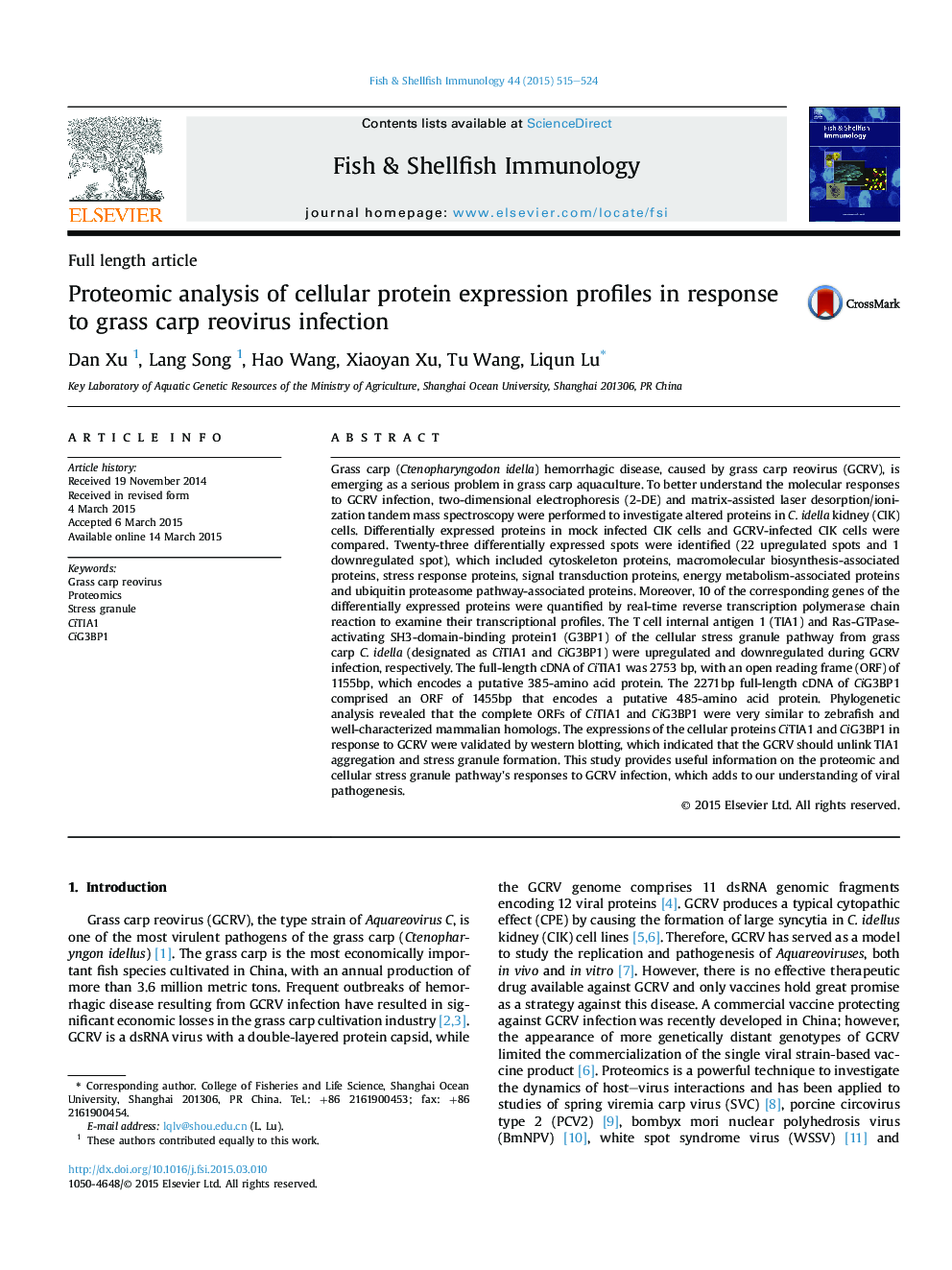| Article ID | Journal | Published Year | Pages | File Type |
|---|---|---|---|---|
| 2431231 | Fish & Shellfish Immunology | 2015 | 10 Pages |
•Upregulated proteins during GCRV infection in CIK cells were identified proteomically.•CiTIA1 and CiG3BP1 were characterized as very similar to fish and mammalian homologs.•CiTIA1 and CiG3BP1 associated with GCRV particles were validated by western blotting.
Grass carp (Ctenopharyngodon idella) hemorrhagic disease, caused by grass carp reovirus (GCRV), is emerging as a serious problem in grass carp aquaculture. To better understand the molecular responses to GCRV infection, two-dimensional electrophoresis (2-DE) and matrix-assisted laser desorption/ionization tandem mass spectroscopy were performed to investigate altered proteins in C. idella kidney (CIK) cells. Differentially expressed proteins in mock infected CIK cells and GCRV-infected CIK cells were compared. Twenty-three differentially expressed spots were identified (22 upregulated spots and 1 downregulated spot), which included cytoskeleton proteins, macromolecular biosynthesis-associated proteins, stress response proteins, signal transduction proteins, energy metabolism-associated proteins and ubiquitin proteasome pathway-associated proteins. Moreover, 10 of the corresponding genes of the differentially expressed proteins were quantified by real-time reverse transcription polymerase chain reaction to examine their transcriptional profiles. The T cell internal antigen 1 (TIA1) and Ras-GTPase-activating SH3-domain-binding protein1 (G3BP1) of the cellular stress granule pathway from grass carp C. idella (designated as CiTIA1 and CiG3BP1) were upregulated and downregulated during GCRV infection, respectively. The full-length cDNA of CiTIA1 was 2753 bp, with an open reading frame (ORF) of 1155bp, which encodes a putative 385-amino acid protein. The 2271bp full-length cDNA of CiG3BP1 comprised an ORF of 1455bp that encodes a putative 485-amino acid protein. Phylogenetic analysis revealed that the complete ORFs of CiTIA1 and CiG3BP1 were very similar to zebrafish and well-characterized mammalian homologs. The expressions of the cellular proteins CiTIA1 and CiG3BP1 in response to GCRV were validated by western blotting, which indicated that the GCRV should unlink TIA1 aggregation and stress granule formation. This study provides useful information on the proteomic and cellular stress granule pathway's responses to GCRV infection, which adds to our understanding of viral pathogenesis.
